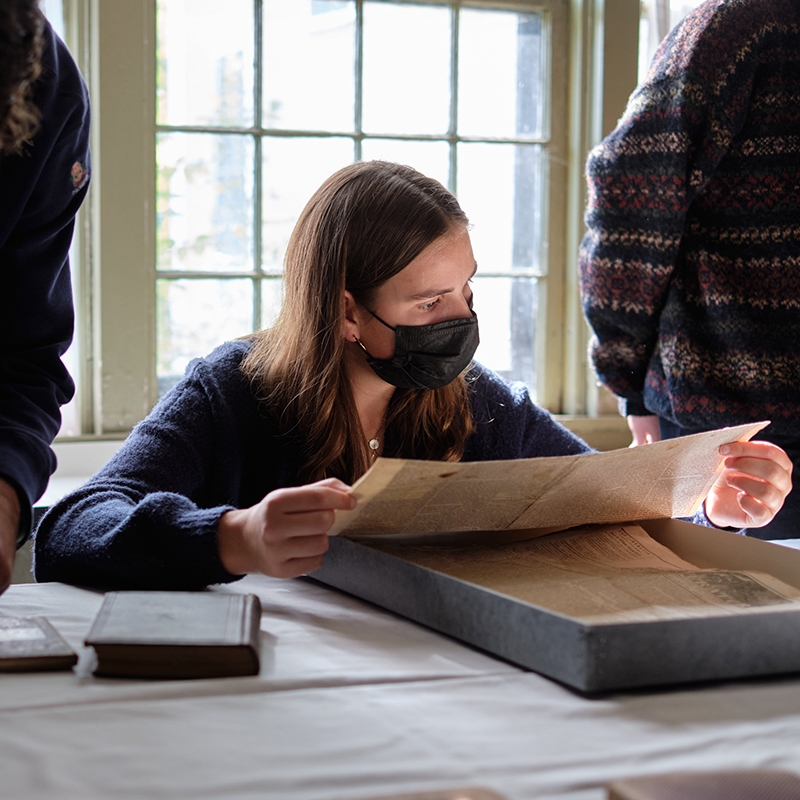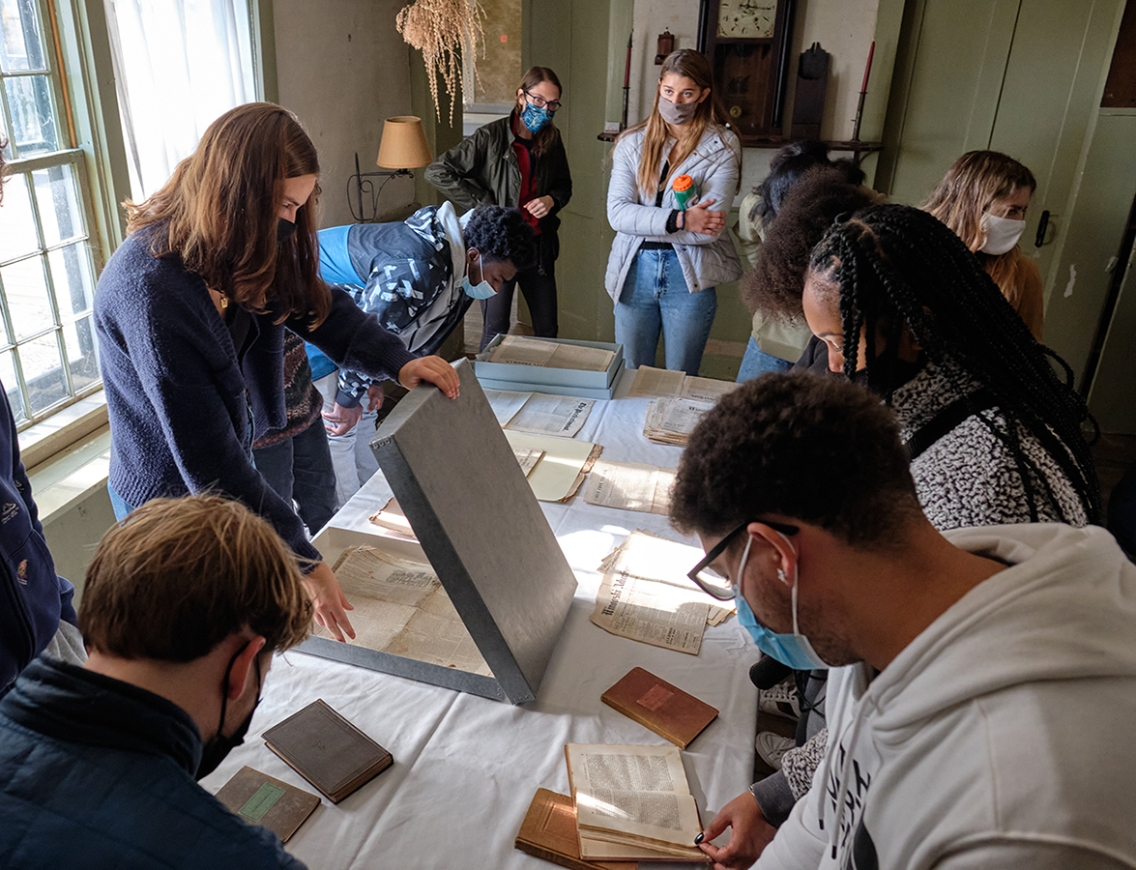Labs, Once a Science Staple, Energize the Humanities and Attract Grant Support

MIDDLEBURY, Vt. - Labs, long associated with science classes, are now becoming an important component of the humanities at Middlebury College, where a new grant will support their inclusion in a wide range of courses from history and Arabic to religion. The lab courses—where students gain new skills for possible use in their future careers—have the potential to attract more students to the humanities, which have experienced a drop in enrollment nationwide and at Middlebury.
The College’s Axinn Center for the Humanities is the recipient of the new funding—a $143,000 three-year grant from the Davis Educational Foundation to support the center’s Public Humanities Labs Initiative. The grant began in July 2021 and will end in June 2024. Febe Armanios and Marion Wells, co-directors of Middlebury’s Axinn Center, will co-direct the grant project as well. Armanios is also a professor of history and Wells is a professor of English and American literatures.
According to Armanios and Wells, each series of labs has two components—experiential and public facing. In the labs, students collaborate with local partner organizations and experts on projects that address important social and cultural issues.
As a pilot project in spring 2021, Middlebury offered 10 humanities courses with labs, where students learned a range of new skills, including working with new software to harvest data from social media; constructing a student-curated museum space to present specific objects studied in a class on slavery; mining the archives of the Sheldon Museum in Middlebury to learn about local history as they investigated how archives are formed; or exploring the material history of the Bayeux Tapestry by participating in weaving workshops and doing their own embroidery.

Armanios noted that the pilot project successfully demonstrated the opportunities that the humanities labs offer students. “As faculty, we hear students voice concern about how their liberal arts education will support their career choices after graduation,” she said. “By participating in lab projects outside the classroom, students immediately see the relevance of their work beyond an academic setting.”
“Studies show that employers overwhelmingly value the skills developed across broad education in the liberal arts rather than the knowledge gained from a particular major,” said Wells. “The lab courses help dispel the myth that humanities majors are at a disadvantage in their careers. In fact, the opposite is true—the humanities are an asset.”
When Armanios and Wells put out a call for new or newly designed courses with a lab component for the 2021-22 academic year, they received an overwhelmingly positive response from humanities faculty. As a result, during its first year, the grant will help support labs in a total of 14 humanities courses at Middlebury—seven in the fall, two during January term, and five in the spring. They are currently accepting applications for lab courses for next year.
“The labs are a spark that have energized humanities faculty to rethink how they present their subjects,” said Armanios. “We have an opportunity now to reintroduce the humanities to the students and to ourselves as faculty.”
Students responded positively—at the start of the semester all the fall semester humanities lab courses were full and had long wait lists. The lab courses include Science and Society (philosophy); Art and Protest (history of art), and Death in Latin America (religion).
Wells said that the labs would not be possible without good connections to local and campus experts as well as the community. Humanities faculty teaching lab courses have established relationships with a growing list of local organizations, including multiple museums, Ilsley Public Library in Middlebury, Vermont Natural Resources Council, and Somali Bantu Community Association of Vermont. Last spring, Robin Foster Cole and Carol Wood, members of the Theatre Department’s costume shop, worked with students in the course on the Bayeux Tapestry.
Wells and Armanios are pleased that the labs appeal to students and faculty since they are both very familiar with the enrollment decline in humanities courses. They documented this development at the College in a July 2020 study—State of the Humanities Report at Middlebury College—that also provides data on corresponding national trends.
With the support of the grant, Wells and Armanios expect the lab classes to become a permanent feature of the humanities curriculum at Middlebury. “The labs will reshape and revitalize the humanities,” said Wells. “It’s going to be exciting to see.”
The Axinn Center for the Humanities
The Axinn Center for the Humanities celebrates the crucial role of the humanities in a liberal arts education through its vigorous support of humanistic research and pedagogy. The center’s Public Humanities Labs Initiative gives faculty and students the opportunity to integrate humanistic learning in creative ways into public-facing and community-based projects that address social and cultural issues of urgent importance.
Davis Educational Foundation
The grant to the Axinn Center for the Humanities was received from the Davis Educational Foundation established by Stanton and Elisabeth Davis after Mr. Davis’s retirement as chairman of Shaw’s Supermarkets, Inc. The foundation, established as a public charitable foundation in 1985, supports the undergraduate programs of public and private, regionally accredited, baccalaureate degree granting colleges and universities throughout the six New England states.
Photos by Brett Simison

